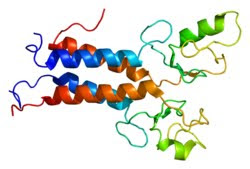Thought Experiment #2
The mammogram controversy is due to multiple competing issues: The desire to test and diagnose early, the excessive insults to the tissues from testing and surgical probing and the potential benefits overall. Lets look at the facts:
- Mammograms in younger women age < 40 years have a higher “false positives,’ and therefore are subjected to un-needed needle biopsies and further radiation exposures for confirmation and re-testing. The NCI projects this false positive reading at 20% (2 in 10). This anomalous reading is primarily due to the increased breast density as a result of the milk ducts and fat ratio.
- Mammograms initiated at an early age also expose the breast tissue to increased life-time radiation. With a risk of 1 Rad (mSv) causing a 2% (2 in 100)/ year risk would necessarily cause the risk to increase to 20% (2 in 10) in 10 years of annual mammography. The peak effect from a single intense source of radiation (Hiroshima and Nagasaki data) occurs in 15 years, the cumulative effects of annual mammography would account for similar peak/plateau to occur. Additional views of the breast to delineate “abnormal” tissues would add to that risk. A known but fortunately rare complication called malignant angiosarcoma occurs due to radiation therapy to the breast with an incidence of 2-5% over a 10-year period in treated patients.
- Radiation from an X-Ray machine is a low-energy source focused-radiation as is in Computer Tomography scans. The energetics from the machine cause dislocation of the electrons within the cells that can disrupt the DNA molecule by changing one of the four Nucleotides: Adenine - Thymine, and Guanine - Cytosine and that form the backbone of the DNA helix. This change can lead to disrupted gene formation. (as in shutting down a tumor suppressor gene or accelerating a tumor promoter gene by changing the down-stream signal transduction via protein to cell propagation).
- Digital Mammograms are no different than the Conventional Mammograms except in the mode of recording. The amount of radiation remains the same as does the light source in a digital camera, only the recording method differs; instead of a film it is recorded on a CMOS chip. Mammograms use low-energy radiation to a total value per test at -20KeV (1 eV or electron volt = 1.602×10−19 J and 20 KeV = 20 * 1 kiloelectron volt = 20 * 1.60217646 × 10-16 joules) The absorbed dose is recorded as 0.56% mSv (millisievert (1 mSv = 10−3 Sv)
- Taking into account all Mammograms, 9 in 10 abnormal mammograms when subjected to a biopsy are proven negative or said in another way; the yield is 10% (1 in 10) true positivity.
- In younger women the risks of developing breast cancer is dependent upon genetics. The family history is extremely important and directive for extra vigilance. An individual whose mother or sister with a history of breast cancer especially at a younger age is high risk as are with known BRCA1 and/or BRCA2 gene mutation are considered high risks. BRCA1 and 2 mutation increase the risk by 60% (6 in 10) up to the age of 90 and increased the risk of Ovarian cancer by 55% or (55 in100) Other factors such as menstrual history, breast feeding (protective?), alcohol (lobular breast cancer) radiation therapy, HRT (hormone replacement therapy), and diet/obesity are surrogates of environmental risks and therefore not taken into account for early age related cancer since the damage is limited and risks projected over time.
- NCI data of risks of breast cancer diagnosis increase with age:
- At age 30 the risk is 0.43 in 10 years
- At age 40 the risk is 1.45 in 10 years or 1 in 233
- At age 50 the risk is 2.38 in 10 years or 1 in 69
- At age 60 the risk is 3.45 in 10 years or 1 in 38
- At age 70 the risk is 3.74 in 10 years or 1 in 27
- At age 80 the risk is 3.02 in 10 years
So in younger women a family history dictates the need for a diagnostic test. If such a test is needed then a MRI (Magnetic Resonance Imaging) may be the test of choice. Albeit the cost is high but the yield is identical to Mammography! The false negative or missing a diagnosis of cancer is roughly 20% (2 in 10) with all known testing procedures available today, including the MRI, however the radiation risks are mitigated.
In older women who do not have dense breasts a competent breast examination leads to an extremely high yield of discovery of malignancy – 83%.
The Incidence of Breast Cancer is increasing both due to diagnostic tests (cause or just discovery?) although a recent downward trend is due to cessation of the HRT and the death rate is also falling due to early diagnosis of DCIS (with mostly 98% 10-year survival) and better management of the disease. The question being is whether the diagnostic testing and disease discovery are just a self-fulfilling prophecy? (Annual mammography, with its inherent radiation effects, over time creates the disease that the test ultimately detects). More data and research definitely needs to be done to address this issue.
Developing non-ionized methods of detection are important for the future. Thermography and Infra-red imaging have yet to prove themselves. Unfortunately BSGI (Breast-specific gamma imaging by 23 times more) and PEM (Positron Emission Mammography by 20 times more) expose individuals to a higher radiation exposure than mammogram.
However a portable MRI dedicated for the breast evaluation can easily be developed. The volume testing would lead to lower costs and limit the annual radiation exposure giving the benefit of 85-87% detection rate currently known and equivalent to mammography minus the risks.








